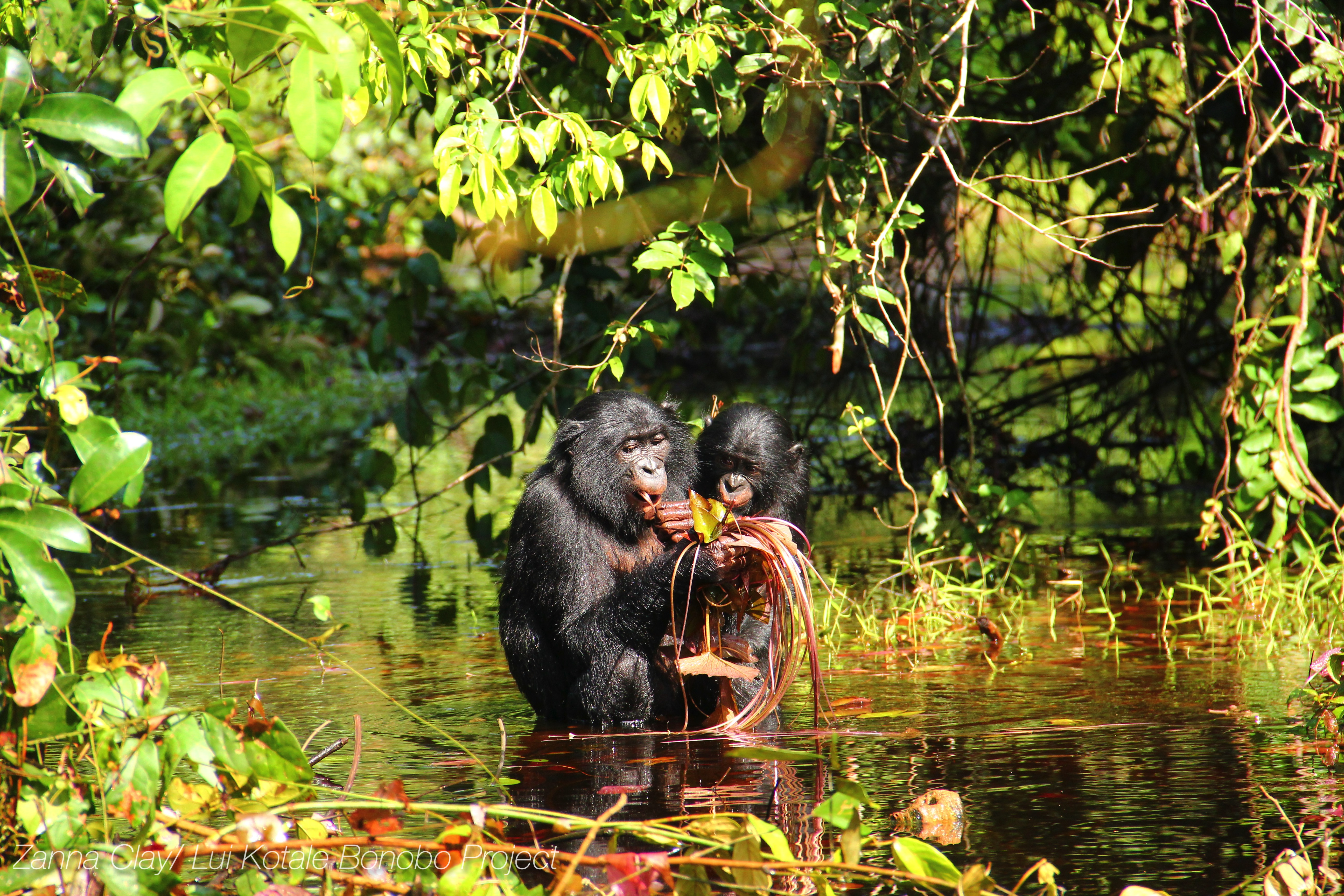Bonobo communication has emerged as a fascinating area of study, revealing striking similarities to human linguistic patterns. Recent research demonstrates that bonobos, our closest relatives, employ complex vocalizations to convey nuanced social information, much like the way humans use language. Their communication includes elements of compositionality, which allows them to create new meanings by combining sounds in sophisticated ways. This vocalization reflects their social complexity, suggesting that the origins of language could extend far beyond our human experience. Understanding bonobo vocalization not only enriches our knowledge of animal communication but also provides insight into the evolutionary roots of our own language.
The study of how bonobos convey messages through sound offers intriguing insights into the broader field of animal communication. Known for their social interactions, these primates use a variety of vocal signals to express emotions and organize group behavior, similar to human linguistic behaviors. This rich tapestry of vocal exchanges showcases the intricate patterns of interaction among bonobos, hinting at deeper connections to the origins of language itself. By exploring the nuances of their communication, researchers can unravel the complexities of social ties and bonding strategies that these intelligent creatures exhibit. As we delve into the shared characteristics of bonobo vocalizations and human language, we gain profound comprehension of both species’ social complexity.
The Vocal Communication of Bonobos
Bonobos exhibit a remarkable array of vocalizations that significantly resemble human speech patterns. Research indicates that these vocalizations contain compositionality, allowing bonobos to convey detailed social information effectively. For instance, a bonobo might use specific whistles to indicate distress or alert others to potential dangers, illustrating how their vocal sounds go beyond simple calls, presenting a complex system of communication that parallels human language.
Moreover, the structured nature of bonobo vocalizations, observed during interactions within their social groups, paints a clear picture of their intent and emotions. This complexity speaks to the sophistication of their social dynamics, mirroring the inherent structure found in human communication. By understanding bonobo vocalization, researchers gain insight into the evolutionary roots of language and how social complexity drives the need for such advanced communication methods.
Bonobo Vocalizations: A Look at Compositionality
The study of bonobo vocalizations highlights the concept of compositionality—a feature once thought to be unique to human language. This idea refers to how smaller units of meaning combine to create larger, more complex ideas. In the bonobo world, a simple sound can change meaning based on its combination with other sounds, similar to how humans create phrases and sentences. For example, a primary whistle can signal a specific action, while its combination with a peep may indicate the emotional state of the animal.
Research has shown that bonobos can employ these vocal combinations to express various contexts, from coordinating group activities to indicating potential threats. This ability to utilize sound in a nuanced manner not only showcases the complexity of their communication but also supports the theory that the origins of language may exist far back in our evolutionary history. By studying these forms of communication, scientists are unraveling the intricate connections between social interactions and the development of language.
Understanding Animal Communication Through Bonobos
The study of bonobos provides a significant contribution to the broader field of animal communication. As researchers document the various sounds used by bonobos and decipher their meanings, they are establishing a ‘dictionary’ of bonobo vocalizations. This approach allows for a systematic understanding of interspecies communication, demonstrating that complex communication systems are not solely a human trait but are present in other highly social animals.
This progress has substantial implications for understanding how social structures influence communication forms across species. Since bonobos have complex social interactions, their communication system reflects their need for social cohesion and cooperation. By exploring these facets, scientists can draw parallels to how other animal species maintain relationships, further supporting the idea that social complexity necessitates advanced communication strategies.
The Evolutionary Implications of Bonobo Communication
The insights gained from studying bonobo vocalizations carry profound implications for our understanding of language evolution. As bonobos share a common ancestor with humans, analyzing their communication patterns can provide clues about the adaptive reasons behind the development of complex language. The compositionality observed in bonobo calls suggests that the underpinnings of language may have been present in our shared ancestors, shedding light on the evolutionary pathways towards human speech.
Furthermore, understanding bonobo communication helps scientists explore how social bonds develop and maintain over time and distance. This perspective not only enhances our knowledge of bonobos but also enriches our understanding of human social structures and language. As researchers continue to document and analyze these vocalizations, they contribute to an evolving narrative about the origins of language and the role social complexity plays in communication systems.
Linking Bonobo and Human Language Origins
The connection between bonobo communication and human language origins is an area of great interest. As it becomes evident that bonobos utilize sound in a way reminiscent of human speech, researchers hypothesize that understanding their vocal behaviors could shed light on the complexities of human language development. The intricate sounds that bonobos produce, characterized by their adaptive nature in various social contexts, suggest that similar patterns may have existed in early human communication.
Additionally, the evolutionary relationship shared between humans and bonobos affords a unique opportunity to study language development in a broader context. Each new discovery about bonobo vocalization not only supports the idea of compositionality but also suggests that language may have evolved as a byproduct of social complexity. Therefore, examining how bonobos communicate offers insights into how human language could have emerged, ultimately reshaping our understanding of linguistic evolution.
Social Complexity and Bonobo Communication
Bonobos operate within complex social structures that influence their communication styles. The ability of a bonobo to vocalize requires a depth of social interaction; these calls serve not only to relay information but also to maintain social bonds within their groups. This interplay between vocalization and social context highlights the importance of communication as a tool for establishing hierarchies and navigating social landscapes.
Moreover, as bonobos adapt their vocal strategies to meet the challenges presented by their social environments, it emphasizes the intricate relationship between social behavior and communication. The studies demonstrate that vocal complexity is closely tied to social complexity, further illustrating that species characterized by advanced social structures tend to exhibit similarly advanced communication methods.
Comparative Studies in Bonobo Vocalization
Exploring bonobo vocalization through comparative studies with other primates like chimpanzees can reveal essential insights into the evolution of communication. By looking at the similarities and differences in how these species use sound, researchers can lay the groundwork for understanding the development of complex language systems. Such studies point towards a similar use of vocal structures and social needs influencing communication methods across species.
By observing vocal patterns and their meanings across different contexts, researchers aim to build a comprehensive understanding of the communication systems utilized by social animals. Findings indicate that both bonobos and chimpanzees share inherent traits in their vocalization patterns, rooting back to shared evolutionary paths. This comparative approach not only enriches the discourse surrounding animal communication but also elucidates the ways in which complex interactional patterns contribute to the development of language in the animal kingdom.
Implications of Bonobo Research on Future Linguistic Studies
The research on bonobo communication has far-reaching implications for future studies in linguistics and animal behavior. As scientists gain a more nuanced understanding of the vocalizations used by bonobos, it opens new avenues of inquiry into how language develops not only in humans but also in other species. The significance of their communication underscores the necessity of considering animal language systems in the context of linguistic research, as they may provide a framework for understanding human language origins.
As bonobo communication encompasses elements of complexity and composition akin to those found in human speech, it highlights the potential for broader investigations into the development of communicative structures. Future linguistic studies can take inspiration from bonobo research, leading to a more profound appreciation of the interconnectedness of language, social behavior, and cognitive evolution across all beings.
Bonobo Social Bonds and Communication Strategies
Social bonds among bonobos are intricately linked to their communication strategies. The dynamic nature of their social interactions requires a sophisticated system of vocalizations to manage relationships and establish affiliations within their groups. For instance, bonobos often vocalize during grooming sessions, reinforcing social ties through sound, demonstrating the multifunctional role of vocalizations in their society.
This emphasis on vocal communication as a means of social bonding speaks volumes about the evolution of complex communication systems. As bonobos navigate their social landscapes through vocal expressions, it offers insights into how communication can foster relationships, drive group cohesion, and influence the development of social complexity within other species, including humans.
Frequently Asked Questions
What is bonobo communication and how does it compare to human language?
Bonobo communication encompasses their vocalizations and social signals, revealing surprising similarities to human language. Research indicates that bonobos use vocalizations that function like word compounds, exhibiting compositionality similar to humans. This suggests that the origins of language could predate humanity, as bonobos utilize complex vocal signals to convey intricate social contexts.
How do bonobo vocalizations demonstrate compositionality?
Bonobo vocalizations illustrate compositionality by using combinations of calls to create meaning. For instance, a single peep might indicate a tense situation, while accompanying whistles coordinate group movements. Researchers developed a ‘dictionary’ of these sounds, emphasizing how various vocal sequences convey specific actions, emotions, or social dynamics, thus highlighting their sophisticated communication.
What role does social complexity play in bonobo communication?
Social complexity plays a crucial role in bonobo communication, as their intricate social structures necessitate advanced vocal interactions. The research suggests that bonobos, much like humans, have evolved a complex communication system that strengthens social bonds and enables effective coordination during group activities, thereby contributing to their overall social organization.
Can bonobo vocalization reveal their social intentions?
Yes, bonobo vocalization can express social intentions, with different calls indicating specific commands, actions, or emotions. For example, a vocalization may signal to run or indicate the presence of a predator. This multifunctionality allows bonobos to communicate effectively about their environment and social interactions, showcasing the depth of their vocal communication.
In what ways can studying bonobo communication enhance our understanding of language origins?
Studying bonobo communication enhances our understanding of language origins by illustrating how complex social behaviors may lead to intricate vocal systems. The findings about bonobo vocalization suggest that the roots of language, including the use of compositionality, were likely established before humans, providing insight into the evolutionary development of communication in primates.
How does the research on bonobo communication impact animal communication studies?
The research on bonobo communication significantly impacts animal communication studies by presenting a structured approach to analyzing vocal repertoires across species. By systematically documenting bonobo calls and their meanings, scientists can better understand the mechanisms and complexities involved in animal communication, paving the way for further exploration in this field.
What implications does the study of bonobo vocalization have for understanding chimpanzee communication?
The study of bonobo vocalization implies that chimpanzees may also exhibit similar levels of compositional complexity in their communication. Both species, characterized by complex social systems, may share evolutionary traits that allow them to develop intricate vocalizations, shedding light on the communication capabilities of our closest primate relatives.
| Key Point | Description |
|---|---|
| Bonobo Vocalizations | Bonobos communicate using various vocalizations similar to human language, utilizing word compounds and structured phrases. |
| Research Findings | A study from the University of Zurich and Harvard indicates that the communication of bonobos demonstrates compositionality, suggesting roots of language predate humans. |
| Complex Social Bonds | Bonobos exhibit complex social behaviors, which facilitate communication over greater distances, and enhance group coordination. |
| Vocabulary Dictionary | Researchers created a dictionary of bonobo vocalizations, indicating various calls correlate with social situations and can convey complex meanings. |
| Comparison with Humans | Both bonobos and humans share similarities in communication systems, reflecting evolutionary connections and the function of language in social structures. |
| Future Research | This study paves the way for further exploration of animal communication and its complexity across different species. |
Summary
Bonobo communication showcases the intricate vocalizations these primates use to engage with one another in their social environments. Through scientific exploration, it has become evident that bonobos share key characteristics with human communication, emphasizing the evolutionary roots of language and social bonding. As researchers delve deeper into this area, understanding bonobo communication not only expands our knowledge of animal behavior but also sheds light on the complexities of our ancestors’ social interactions.



